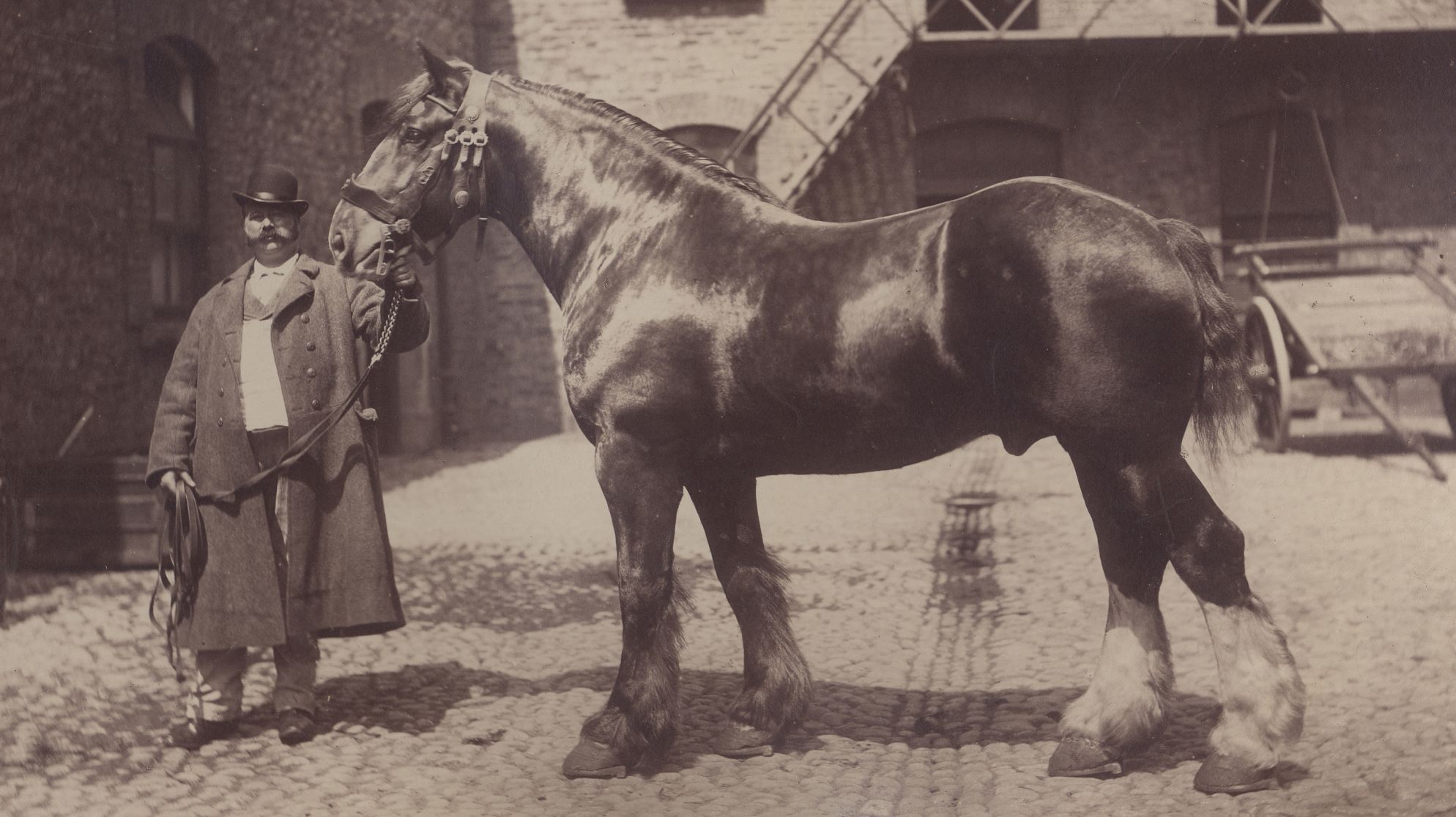TRANSPORTING GUINNESS
FROM GRAIN TO GLASS

THE GUINNESS JOURNEY
Guinness has consistently sought innovative solutions to meet ever-increasing global demand. Geographical obstacles were overcome using a range of transport types - and led to the company commissioning its own barges, ships and even building a railway within the brewery site!
Guinness was initially transported locally using horse-drawn drays from its establishment in 1759. Guinness operated its own stables onsite at St. James’s Gate and employed a staff of draymen to facilitate the movement of Guinness across Ireland and within the brewery site itself.
Guinness’s own horses were Clydesdales and Percherons due to their large size and strength and all Guinness horses received names.
Horses were occasionally named in pairs, such as ‘Pride & Prejudice’ or ‘Thunder & Lightning’ but some were named individually – such as ‘Bruce’ and ‘Cecil’. The early 20th century saw the introduction of motor cars to the Guinness fleet to transport Guinness domestically, but it is worth noting that horses were used right up to 1960.

Guinness immediately took advantage of the opening of the Grand Canal in Dublin city in 1798. Barges were used to transport raw materials, casks and the liquid itself across the country. The barges were a familiar sight to Dubliners and were a regular part of the hustle and bustle of the city.
RIVER & RAIL
The increased success of the company led to a period of massive expansion at St. James’s Gate in the 19th century, particularly as the company looked to broaden its reach overseas. Guinness acquired new land across James’s Street and adjacent to the River Liffey in 1873, doubling the brewery’s overall size. This increased footprint meant it became more difficult to move material around the brewery site with horsepower alone. Guinness’s solution was to build its own railway.

The railway was completed in 1877, consisting of eight miles of track across the site. The first five narrow-gauge locomotives were bought between 1875 and 1878. The Geoghegan engines, which ran along the railway within the Brewery site, were initially all steam powered.
Planet diesel engines gradually replaced the steam locomotives over the course of the 1950s. The narrow-gauge railway was in use right up to 1975 and two of the original engines remain on display on the Transport exhibition in the Guinness Storehouse.
Guinness amassed a fleet of barges in the 1870s during this period of expansion, constructing its own jetty on the River Liffey. This allowed them to transport wooden casks of Guinness directly between the brewery and Dublin Port. The company commissioned its own fleet of steam-operated barges in 1877, all of which were named after Irish rivers.
The last Guinness barge sailed down the Liffey on 21 June 1961.

SETTING SAIL
Guinness began exporting to Britain in its infancy in 1796. The early 1800s saw exports become more ambitious with Guinness travelling to as far as Barbados, Lisbon, New York, Sierra Leone and South Carolina. Guinness relied on shipping companies to export Guinness from Dublin Port until the early 20th century.
The company purchased its first ship in 1913, the S.S W.M Barkley, which was lost to a torpedo during World War I. The S.S. W.M. Barkley was the first of nine ships acquired between 1913 and 1977. The company upgraded the Guinness fleet consistently to keep pace with advances in transport technology. Guinness continued to use its own fleet until 1993.
These days, Guinness gets around a little differently. Guinness announced the introduction of twenty electric vehicles in January 2022, including four electricity-powered trucks and fifteen vans as part of its zero emissions strategy.
